论文解读:PromptBERT: Improving BERT Sentence Embeddings with Prompts
一、动机
- 虽然BERT等语言模型有很大的成果,但在对句子表征方面(sentence embeddings)上表现依然不佳,因为BERT存在sentence bias、anisotropy问题;
- 我们发现prompt,再给定不同的template时可以生成不同方面的positive pair,且避免embedding bias。
二、相关工作
??Contrastive Learning(对比学习) 可以利用BERT更好地学习句子表征。其重点在于如何寻找正负样本。例如,使用inner dropout方法构建正样本。
现有的研究表明,BERT的句向量存在一个坍缩现象,也就是句向量受到高频词的影响,进而坍缩在一个凸锥,也就是各向异性,这个性质导致度量句子相似性的时候存在一定的问题,这也就是anisotropy问题。
发现:
(1)Original BERT layers fail to improve the performance.
??对比两种不同的sentence embedding方法:
- 对BERT的输入input embedding进行平均;
- 对BERT的输出(last layer)进行平均
评价两种sentence embedding的效果,采用sentence level anisotropy评价指标:

anisotropy:将corpus里面的sentence,两两计算余弦相似度,求平均。
对比了不同的语言模型,预实验如下所示:
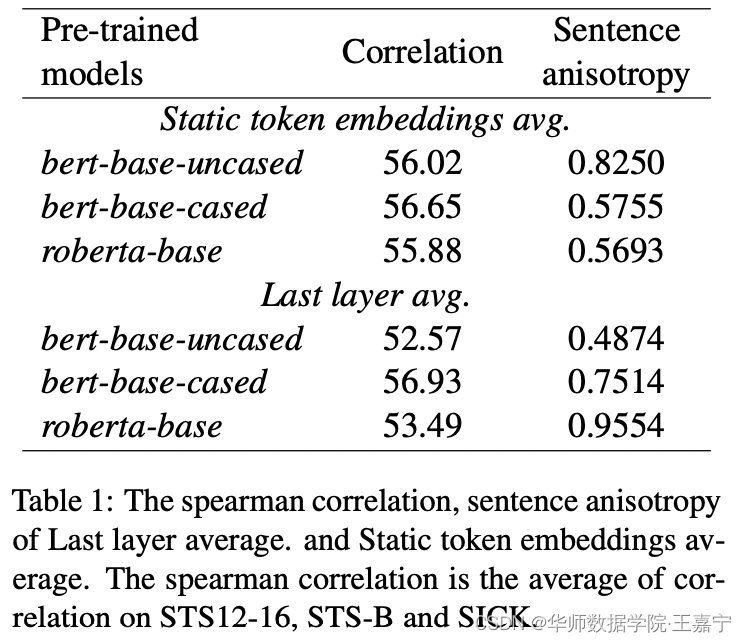
- 从上表可以看出,貌似anisotropy对应的spearman系数比较低,说明相关性不大。比如bert-base-uncased,
- 可以看出static token embedding的anisotropy很大,但是最终的效果也差不多。
(2)Embedding biases harms the sentence embeddings performance.
token embedding会同时受到token frequency和word piece影响
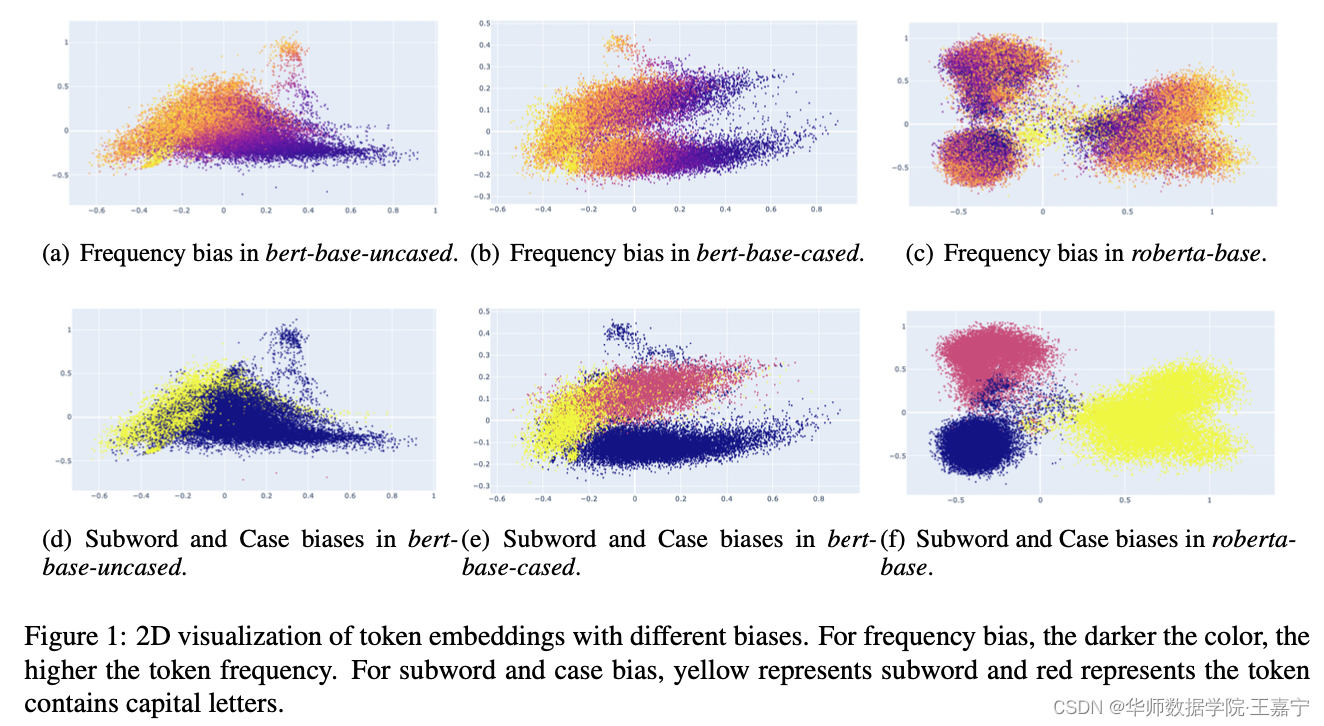
- 不同的语言模型的token embedding高度受到词频、subword的影响;
- 通过可视化2D图,高频词通常会聚在一起,低频词则会分散
For frequency bias, we can observe that high fre- quency tokens are clustered, while low frequency tokens are dispersed sparsely in all models (Yan et al., 2021). The begin-of-word tokens are more vulnerable to frequency than subword tokens in BERT. However, the subword tokens are more vul- nerable in RoBERTa.
三、方法
??如何避免BERT在表征句子时出现上述提到的问题,本文提出使用Prompt来捕捉句子表征。但不同于先前prompt的应用(分类或生成),我们并不时获得句子的标签,而是获得句子的向量,因此关于prompt-based sentence embedding,需要考虑两个问题:
- 如何使用prompt表征一个句子;
- 如何寻找恰当的prompt;
本文提出一种基于prompt和对比学习的句子表征学习模型。
3.1 如何使用prompt表征一个句子
??本文设计一个template,例如“[X] means [MASK]”,[X] 表示一个placehoder,对应一个句子,[MASK]则表示待预测的token。给定一个句子,并转换为prompt后喂入BERT中。有两种方法获得该句子embedding:
- 方法一:直接使用[MASK]对应的隐状态向量: h = h [ M A S K ] \mathbf{h} = \mathbf{h}_{[MASK]} h=h[MASK]?;
- 方法二:使用MLM在[MASK]位置预测topK个词,根据每个词预测的概率,对每个词的word embedding进行加权求和来表示该句子:
h = ∑ v ∈ V t o p k W v P ( [ M A S K ] = v ∣ h [ M A S K ] ) ∑ v ∈ V t o p k P ( [ M A S K ] = v ∣ h [ M A S K ] \mathbf{h}=\frac{\sum_{v\in\mathcal{V}_{topk}}\mathbf{W}_vP([MASK]=v| \mathbf{h}_{[MASK]})}{\sum_{v\in\mathcal{V}_{topk}}P([MASK]=v| \mathbf{h}_{[MASK]}} h=∑v∈Vtopk??P([MASK]=v∣h[MASK]?∑v∈Vtopk??Wv?P([MASK]=v∣h[MASK]?)?
方法二将句子使用若干个MLM生成的token来表示,依然存在bias,因此本文只采用第一种方法
3.2 如何寻找恰当的prompt
??关于prompt设计上,可以采用如下三种方法:
- manual design:显式设计离散的template;
- 使用T5模型生成;
- OptiPrompt:将离散的template转换为continuous template;
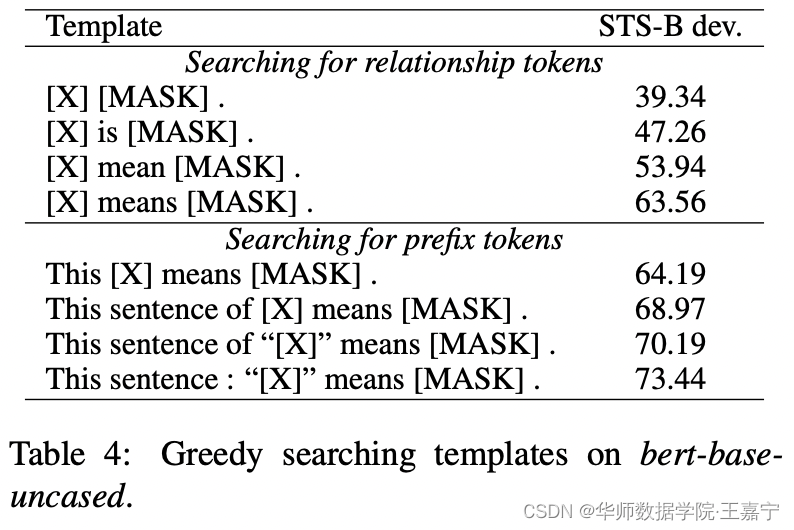
3.3 训练
??采用对比学习方法,对比学习中关于positive的选择很重要,一种方法时采用dropout。本文采用prompt方法,为同一个句子生成多种不同的template,以此可以获得多个不同的positive embedding。
The idea is using the different templates to repre- sent the same sentence as different points of view, which helps model to produce more reasonable pos- itive pairs.
为了避免template本身对句子产生语义上的偏向。作者采用一种trick:
- 喂入含有template的句子,获得[MASK]对应的embedding h i \mathbf{h}_i hi?;
- 只喂入template本身,且template的token的position id保留其在原始输入的位置,此时获得[MASK]对应的embeding: h ^ i \hat{\mathbf{h}}_i h^i?
- 当前句子表示为 h i ? h ^ i \mathbf{h}_i - \hat{\mathbf{h}}_i hi??h^i?
??最后套入对比学习loss中进行训练:

四、实验
??作者在多个文本相似度任务上进行了测试,实验结果如图所示:
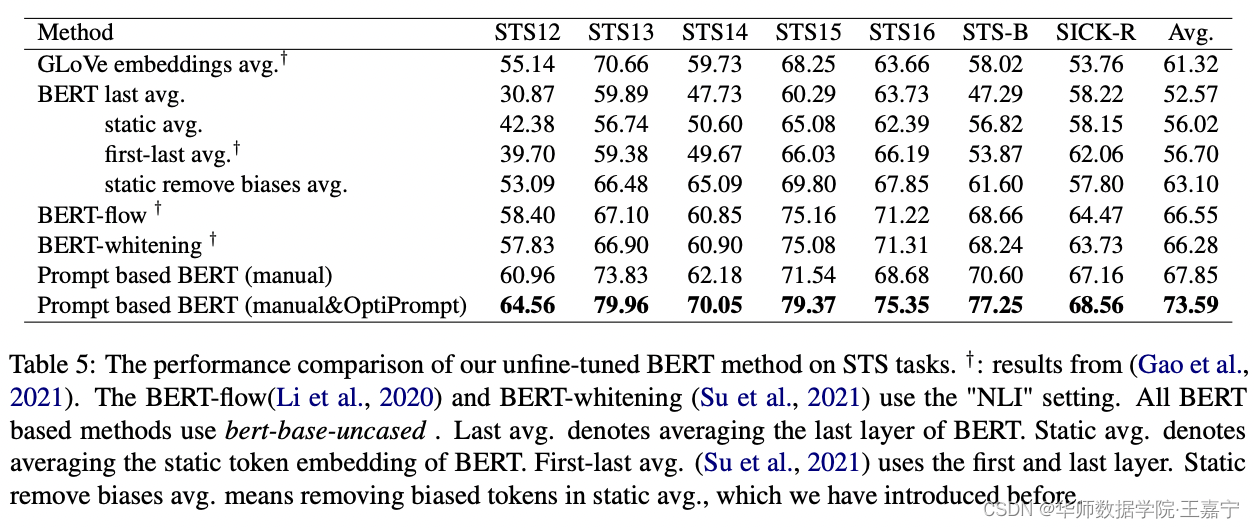
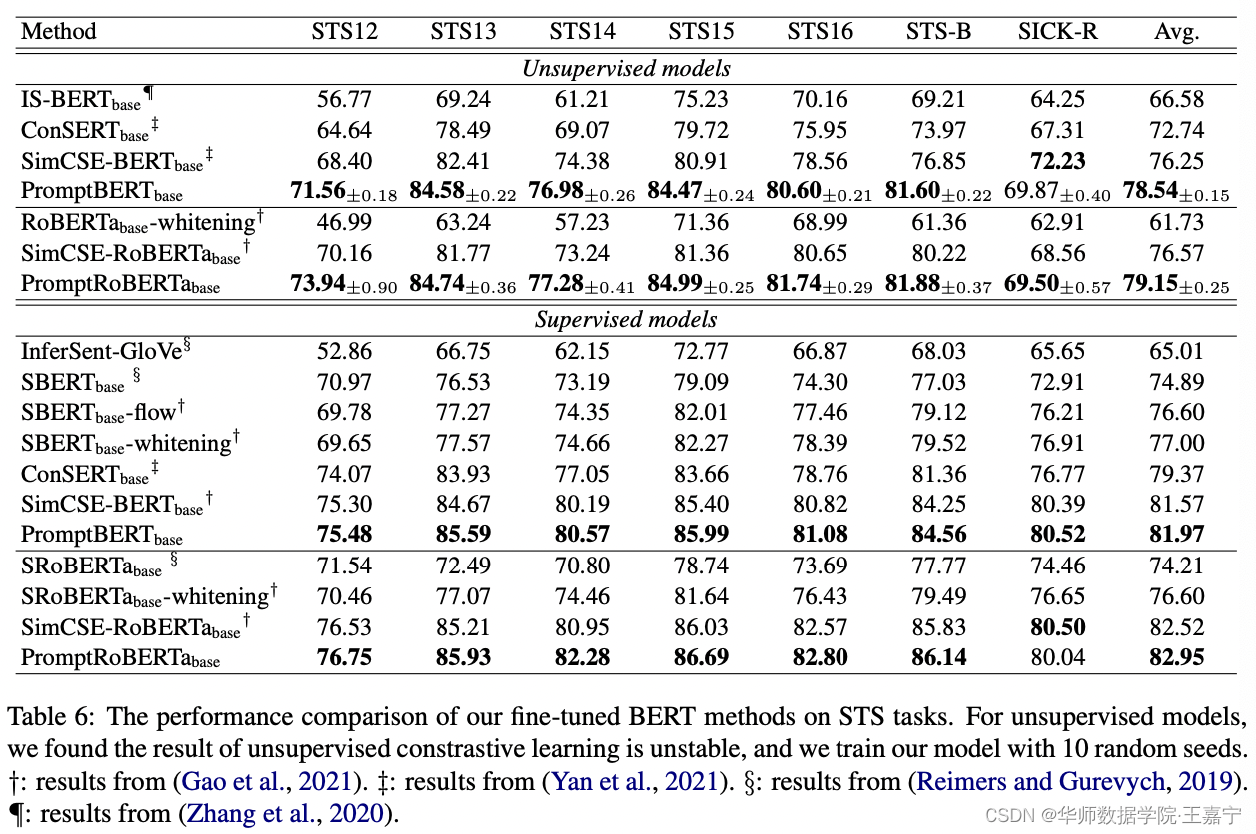
??惊奇的发现,PromptBERT某些时候竟然比SimCSE高,作者也提出使用对比学习,也许是基于SimCSE之上精细微调后的结果。
参考文献或关键词:
【1】SimCSE:https://zhuanlan.zhihu.com/p/369075953
【2】BERT-flow:https://zhuanlan.zhihu.com/p/352523794
【3】什么是各项异性/各项同性:https://www.zhihu.com/question/460991118/answer/1906738611
【4】Alignment和uniformity